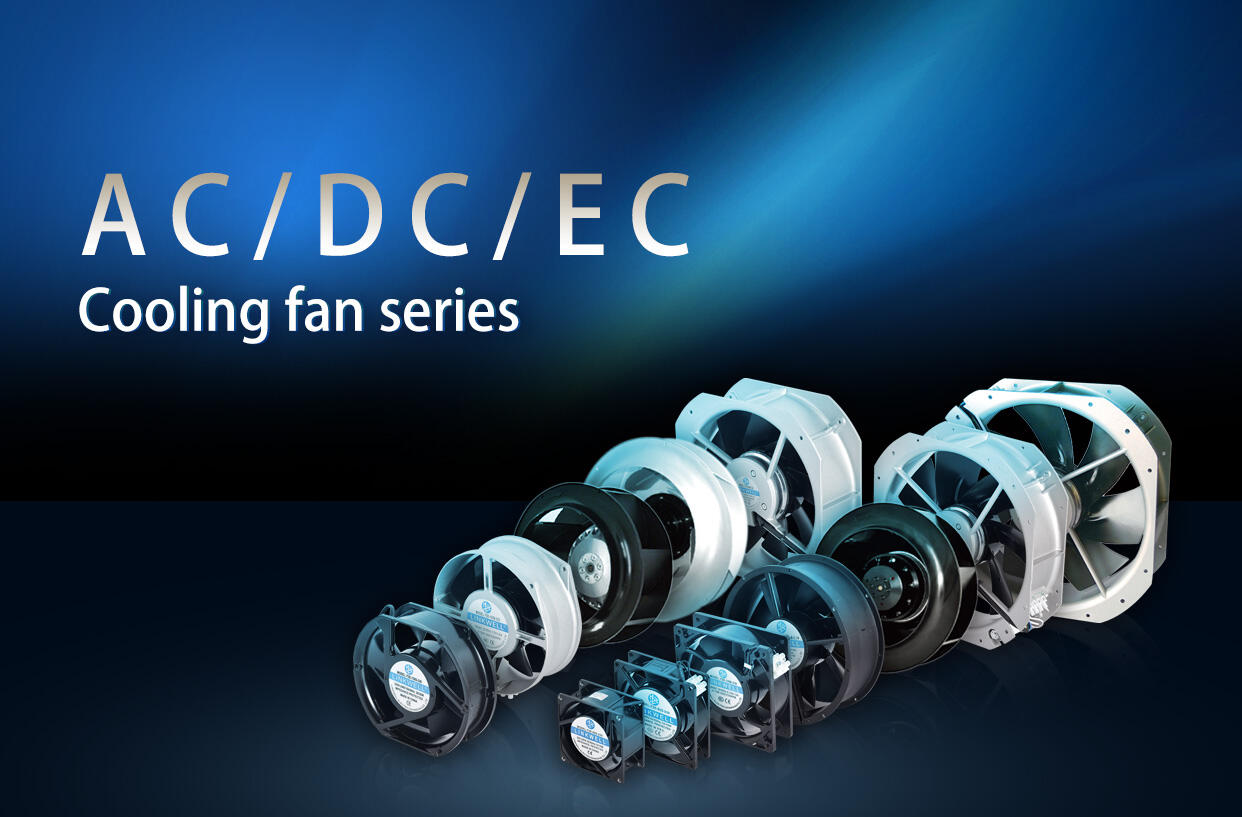Comparison of AC Fans, DC Fans, and EC Fans
LINKWELL AC fans, DC fans, and EC fans differ significantly in various aspects, primarily in terms of power supply type, motor type, performance characteristics, application areas, as well as their advantages and disadvantages.

I. Power Supply Type and Motor Type
AC Fans: Driven by alternating current (AC) power, typically utilizing single-phase or three-phase asynchronous motors. The stability of AC power voltage and frequency enables AC fans to excel in output power and mechanical efficiency.
DC Fans: Powered by direct current (DC) sources, featuring brushed or brushless DC motors. The fluctuation in DC voltage and current can somewhat impact the performance of DC fans.
EC Fans: Utilize electronic controllers to drive permanent magnet synchronous motors. These fans combine the small size and high efficiency of DC fans with the high reliability and control performance of AC fans.
II. Performance Characteristics
-
AC Fans:
- Simple structure, low manufacturing cost.
- Stable rotational speed, good torque stability under varying loads, high reliability.
- Wide speed regulation range, adjustable according to demand.
- Good noise control, reduced through built-in sound-insulating materials and sealing technology.
- Compact size, lightweight, easy installation and maintenance.
- Advanced permanent magnet synchronous motors, achieving over 90% motor efficiency.
-
DC Fans:
- Excellent starting and speed regulation characteristics.
- More energy-efficient and environmentally friendly compared to AC power sources.
- Superb torque performance and control at low speeds and loads.
- Require controllers for DC output, with relatively high electromagnetic radiation.
-
EC Fans:
- High intelligence, energy savings, efficiency, and long lifespan.
- Minimal vibration and low noise, with significant advantages in power saving and noise reduction.
- Wide speed regulation range, supporting multiple speed control methods (e.g., 0-10V/4-20mA analog speed control, PWM control, RS485 communication).
- Precise control of rotational speed, air volume, and pressure through electronic controllers.
- Simple and reliable system, eliminating the need for additional electrical components such as frequency converters and capacitors.
III. Application Areas
AC Fans: Widely used in industrial ventilation, cooling, HVAC, agriculture, transportation, and other fields.
DC Fans: Primarily applied in computers, communication equipment, power tools, and small household appliances.
EC Fans: Currently, they are extensively utilized in air handling, ventilation, refrigeration, freezing equipment, fresh air systems, and have gained market recognition due to their high efficiency and environmental friendliness.
IV. Comparison of Advantages and Disadvantages

In summary, LINKWELL AC fans, DC fans, and EC fans each have their unique strengths in terms of power supply type, motor type, performance characteristics, application areas, as well as their respective advantages and disadvantages. Users should select the appropriate fan type based on their specific requirements and application scenarios.

